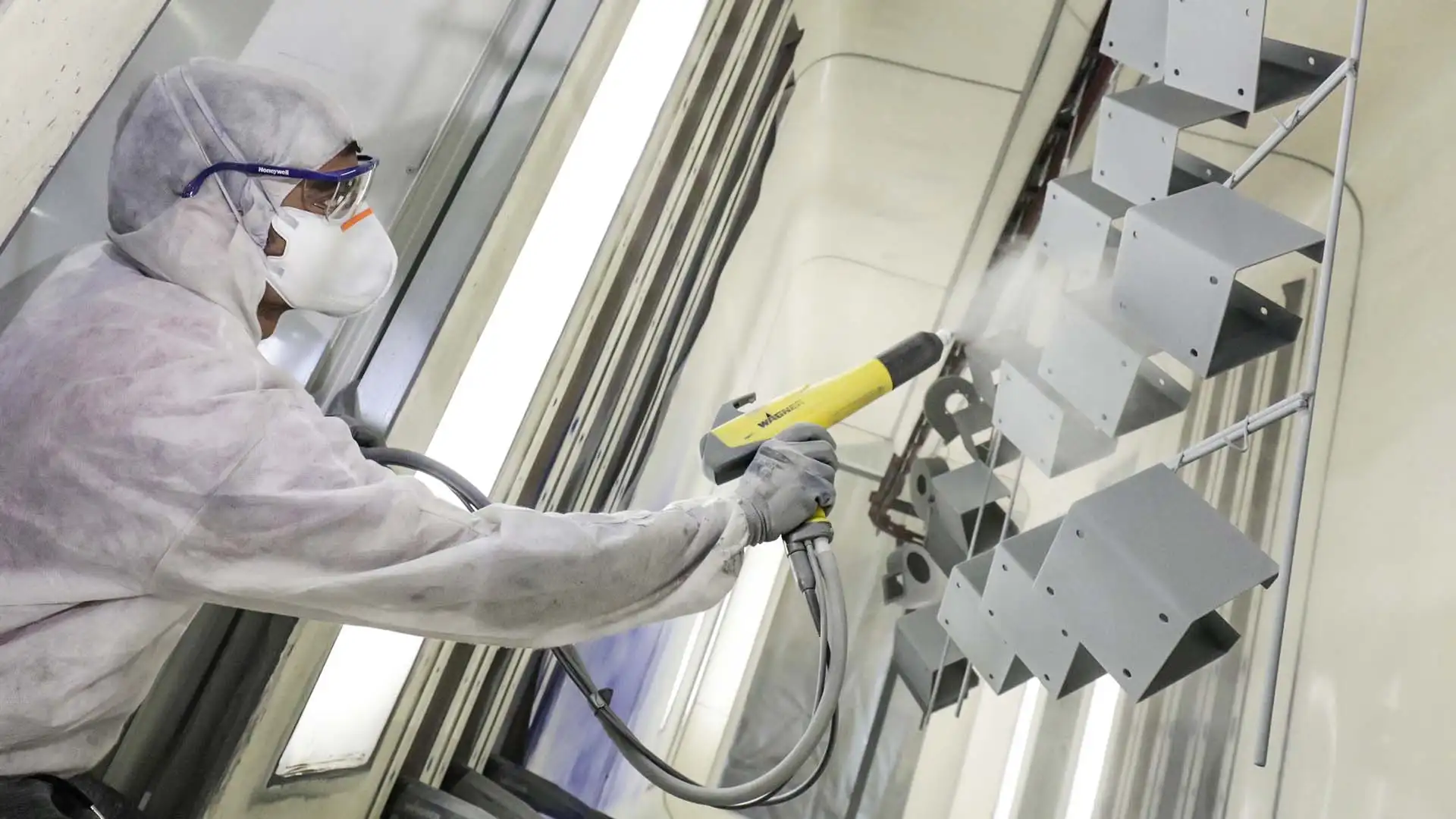Surface treatments and coatings for steel

Surface treatments and coatings for steel: types and applications
Steel is one of the most widely used materials in the industry—for good reason: it’s strong, durable, and incredibly versatile. But to get the most out of it—especially when used in complex environments, electronic systems, or heavy-duty applications—it must be carefully processed and treated.
Surface treatments and coatings for steel aren’t just about appearance; they are a critical part of the overall design. They help protect components, enhance their functionality, and, when needed, provide custom finishes. That’s why choosing the right solution is a technical decision—and one that elmec can help you make in the most effective way to achieve the expected results.
Why treat steel?
When working with components for electronic applications, every detail counts. Surface treatments for steel can significantly improve resistance to corrosion, wear, chemicals, or temperature variations. They also allow the metal to be adapted to the environment it will be used in, the stresses it will endure, and the technical requirements of each project.
For instance, in electronics, it’s common for steel components to undergo specific treatments to improve conductivity, prevent oxidation, or enhance heat dissipation. In
other cases, the focus may be aesthetic, functional, or both. The key is to evaluate, from the earliest project stages, how each choice will impact the final result.
Steel surface treatments: an overview of the most common types
There are many ways to enhance the properties of steel, but surface treatments have a particularly direct impact on its performance. Here’s an overview of the most widely used treatments, grouped by function, with a focus on their application in the electronics sector.
Protective treatments
Stainless steel passivation: A chemical treatment that, following any required pickling steps, creates a protective chromium oxide layer and significantly increases corrosion resistance. Essential for long-term durability in harsh environments and for optimizing the adhesion of further coatings or paints.
Zinc coating (galvanization): Comes in different forms. Hot-dip galvanizing is ideal for highly corrosive outdoor environments due to its thicker protective layer. Electroplating produces a thinner, more uniform layer suitable for tighter tolerances and aesthetic needs. Both methods provide excellent protection against moisture and weathering.
Electroless or electrolytic nickel plating: Enhances resistance to wear, friction, and chemicals. Electroless nickel ensures a uniform coating even on complex geometries.
Aesthetic and functional treatments
Satin finishing, sandblasting, polishing: Improve appearance, remove imperfections, and simplify subsequent processes. Ideal for visible or design-driven components.
Copper plating, tinning, silvering, gilding: Conductive or decorative coatings, mainly used to enhance solderability and electrical contact. When applied to steel, they usually require intermediate layers or special pre-treatment.
Powder or liquid painting: Both offer protection and customization. Powder coating provides greater durability and is suited for simpler shapes, while liquid painting offers more flexibility and is better for complex geometries.
Special treatments
Clear coating (zapponatura): A transparent protective resin coating, typically acrylic or polyurethane-based. Ideal for chromed or polished surfaces, it preserves the metal’s appearance and protects against scratches and oxidation.
Laser marking, screen printing, pad printing, digital printing: Enable permanent, precise, and long-lasting identification, coding, or customization of components.
Advanced,etal coatings
In addition to post-processing treatments, some coatings are applied during the sheet metal production phase. Examples include aluminized steel, Aluzinc®, and Magnelis®—solutions that combine excellent mechanical properties with high corrosion resistance.
Aluminized steel: A coating made of aluminum and silicon alloy that improves heat and corrosion resistance while enhancing mechanical strength.
Aluzinc®: A coating of aluminum, zinc, and silicon that increases resistance to heat, corrosion, and abrasion—while offering an aesthetically pleasing finish.
Magnelis®: A zinc-aluminum-magnesium alloy that provides superior protection in aggressive environments, with self-healing capabilities that ensure continuous protection even after minor damage.
Pre-treated materials can streamline production processes and deliver long-term high performance—especially in complex fields such as electronics and related sectors: automation, HMI, audio and video systems, energy management, home automation, and more.
The elmec advantage: your trusted partner
We understand how critical surface treatments are—and we know that in a complex industry like mechanical solutions for electronics, there’s no one-size-fits-all solution. Every metal surface must be designed to last, protect electronics, enhance performance, meet specific technical requirements, and ensure consistency with its intended use.
That’s why, in addition to our in-house expertise in metal fabrication, we offer integrated surface treatment services during the production phase—backed by a highly skilled internal team and a well-established network of specialized technical partners.
As your single point of contact, we manage every step of your project: from selecting the most suitable treatment to coordinating production and ensuring final quality. Whether it’s a one-off part or a series production, each component is treated to integrate seamlessly into your systems and installations—with the performance you can rely on over time.
Want to find the right treatment for your project?
Let’s talk. Get in touch with our technical team and let’s analyze your idea together!